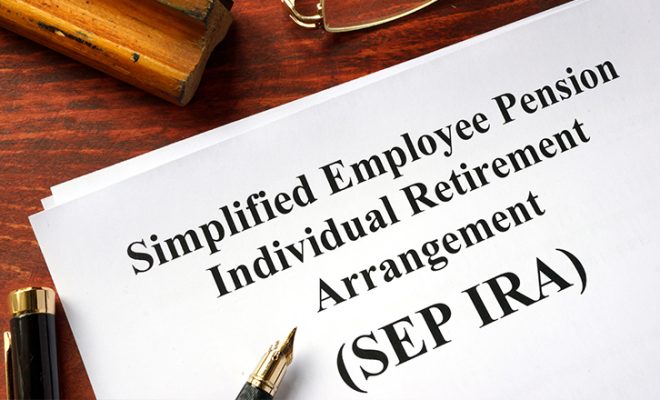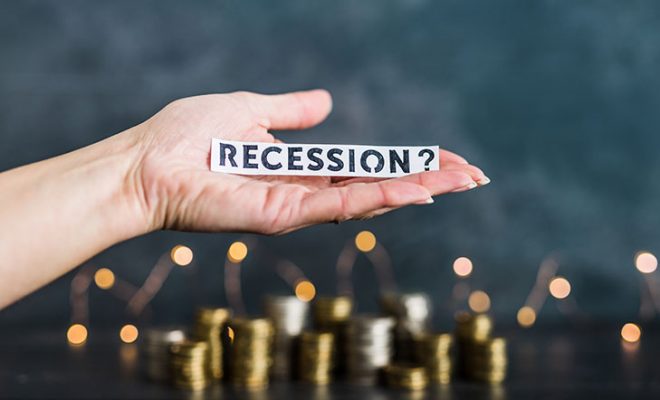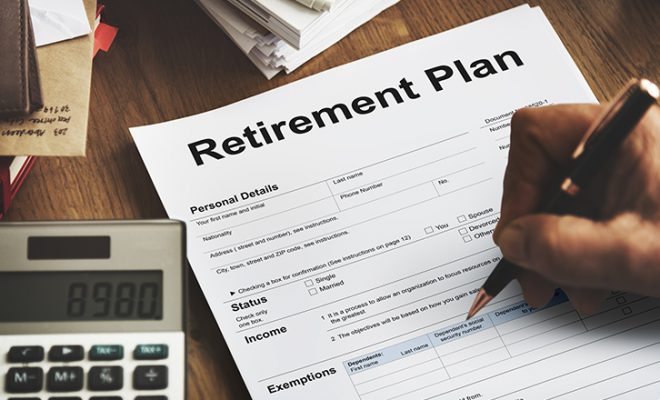How to Plan for the Three Phases of Retirement

Your retirement years are not all going to be the same. The early years will vastly differ from the ones that come later. Retirement can broadly be divided into three phases. Each phase will bring unique experiences and challenges, which is why you will need three different stages of retirement planning to prepare for them. Understanding these phases is essential to ensure you enjoy your golden years to the fullest.
This article will discuss the three phases of retirement and how you can plan for them. A financial advisor can also guide you through this process and help you understand what to expect from the different phases of retirement.
How to plan for the three phases of retirement?
To plan for the different phases of retirement, you need to first understand what each of these phases will look like. Here are the three stages of retirement and what you can do to plan for them:
1. Go-go phase of retirement
The first phase of retirement is known as the go-go phase. This phase marks the early years of your retirement. If you retire in your 60s, this phase can last till your early 70s. The go-go years are often considered the best years of post-retirement life. During this phase, you are relatively young, energetic, and eager to enjoy the fruits of your lifelong earnings and hard work. With financial support from your retirement savings and relatively good health, you can use this time to pursue hobbies, travel, socialize, and spend quality time with family and friends.
Here are some activities to focus on during the go-go years:
a. Travel: Traveling during the go-go phase can be incredibly fulfilling. You have the freedom, health, and energy to explore new places, meet new people, and experience different cultures. You can go on international trips, sea cruises, or road trips across the country. Many retirees take this opportunity to invest in a Recreational Vehicle (RV) to tour around the country. This newfound freedom can be exhilarating and offers numerous benefits for your mental and physical health.
b. Pursuing hobbies: Retirement provides the perfect opportunity to explore your hobbies and discover hidden talents you may not have had time for before. Whether it is golfing, cooking, painting, or joining book clubs, these activities can be enriching and incredibly rewarding. Engaging in hobbies allows you to meet like-minded people, form new friendships, and create a sense of community.
c. Socializing: Social activities such as dining out, game nights, galas, and community events can be great ways to unwind and connect with others. Organizing dinner parties, lunches, and picnics can keep your social calendar exciting. Staying socially active also helps maintain emotional well-being.
d. Spending time with family: If you have grandchildren, babysitting can be a wonderful way to stay engaged and build strong bonds with them. It also provides an opportunity to support your children, who may be busy with their careers. This time with family can be deeply gratifying and fulfilling.
Tips for managing your finances during the go-go years
a. Create a budget: While the go-go years offer plenty of opportunities for enjoyment, they also come with financial considerations. It is easy to get carried away with the newfound freedom and spend more than is prudent. Establishing a budget is essential to ensure you stick to your financial plan and avoid overspending. A budget brings discipline and helps manage your retirement savings, so they last throughout your lifetime. Ensure that you allocate funds not only for travel, hobbies, and social activities but also for future needs to secure a balance between present and long-term financial stability.
b. Plan ahead: If you have significant expenses coming up, such as a big trip, plan for them in advance. Cutting back on non-essential spending in the months leading up to the trip can help balance your budget. Planning allows you to enjoy your activities without financial stress.
c. Be balanced: It is important to strike a balance between enjoying your retirement and being financially prudent. There is no need to deprive yourself of experiences that bring joy. You need to focus on living in the present and making the most of these vibrant years, but make sure that you always keep an eye on your financial future.
d. Engage with a financial advisor: Regular meetings with your financial advisor can help you stay informed about your finances. A financial advisor can review your retirement plan and suggest ways to manage your withdrawals to ensure the longevity of your savings. They can also recommend suitable investments based on your risk appetite. While your risk tolerance may decline in retirement, it is still higher during the go-go years than it will be later on. So, you may discuss maintaining some investment in stocks to ensure your portfolio continues to grow.
2. Slow-go phase of retirement
The slow-go years are the second out of the three phases of retirement. As the name suggests, this is when things start to slow down a bit. The slow-go phase can start in your 70s and continue into your early 80s. During this time, you will observe some changes like altering health, lower enthusiasm, declining investment risk appetite, and more. This phase requires a shift in focus to adapt to these new circumstances.
Here are some things to focus on during the slow-go years:
a. Prioritize your health: As you start to notice your health deteriorating, it becomes crucial to focus on maintaining and improving it. Regular health checkups are essential during these years. They can help you catch underlying issues. Staying active is also important. You can consider joining a gym or a yoga class to ensure you remain healthy. Regular exercise keeps you agile for longer and can significantly enhance your quality of life. Additionally, make necessary changes to your diet, such as opting for lean meats over red meat to benefit your heart. You can consider hiring a nutritionist to personalize a diet chart tailored to your specific needs.
b. Embrace adventure but make some adjustments: While your energy levels may not be as high as during the go-go phase, you can still explore and stay active. It is important to adjust your adventures to fit your new lifestyle. For example, you can consider shorter, more manageable outings instead of a long sea cruise. Travelling within the state, visiting museums in your city, and checking out local attractions can allow you to continue enjoying new experiences while being mindful of your energy levels and health.
c. Continue socializing: Maintaining social connections is vital for your mental and emotional well-being. Regular interactions with friends and family can help keep you active and fulfilled. You can continue to organize social gatherings and attend local community events to stay engaged. Social interactions play a crucial role in preventing loneliness and depression, which makes them an essential part of your retirement.
SPONSORED WISERADVISOR
Tips for managing your finances during the slow-go years
a. Focus on healthcare expenses: As your health concerns become more prominent during these years, managing healthcare expenses becomes critical. These are the years you can rely on your savings from your Health Savings Accounts (HSAs), Medicare, and health insurance to cover medical costs. Make sure that your accounts and policies are in order to prevent depleting your other savings on healthcare expenses.
b. Review your estate plan: The slow-go years often bring significant changes in your personal life, such as losing a spouse or welcoming new grandchildren. Reviewing and updating your estate plan to reflect these changes is essential. Make sure that your estate plan is up to date so that you can provide for your loved ones according to your wishes.
c. Prepare for the future: You must use your slow-go years to prepare for the future. This involves considering long-term care and the associated costs. Long-term care can be expensive, and it is essential to plan for it. You can consider purchasing long-term care insurance to cover these potential costs. It is also advisable to evaluate the possibility of selling your home or other assets to fund long-term care if necessary. This ensures you are ready for the next phase of your life without being dependent on your children.
d. Engage with a financial advisor: Regularly consulting with a financial advisor during the slow-go years is crucial. They can help you assess your retirement savings and make necessary adjustments. You must discuss possible investment options with a financial advisor, as your risk appetite may decline during this phase. It is recommended to move from higher-risk investments, like stocks, to more stable options, such as fixed-income investments, to protect your savings and ensure financial stability.
3. No-go phase of retirement
The no-go phase is the last of the three phases of retirement. This stage starts in your late 80s and covers the rest of your life. Health often declines significantly during this period, leading to increased healthcare expenses. The energy to pursue interests and hobbies may also wane and potentially impact your mental health and overall happiness.
Here are some things to focus on during the no-go years:
a. Focus on your health: Your health will likely be your primary concern during the no-go years. The possibility of moving into a retirement home or hiring full-time help at home can become very real, which can substantially increase your costs. It is essential to be prepared to use most or all of your retirement savings for health expenses if necessary.
b. Do not neglect your mental health: As you age, the loss of friends and spouses can lead to feelings of loneliness and depression. It is important to seek help when necessary to manage your emotions. You can consider joining support groups, engaging in light social activities, and seeking professional counseling if needed. While it may be hard to stay physically active during this time due to ailments, you must still try to stay mentally active by reading books, solving word puzzles, knitting, etc., to maintain good mental health.
c. Be optimistic: While the no-go years are often seen as the end of life, they can last for many years, depending on your health and family history. There is no need to stop living your life, and you must still try to find joy and fulfillment.
Tips for managing your finances during the no-go years
a. Be financially prudent: It is important to continue budgeting carefully to make sure your savings last for as long as you live. Managing your finances prudently during this time is essential to balance health expenses with other needs, such as groceries, house repairs, gas, and more.
b. Prioritize legacy and estate planning: End-of-life decisions become more pressing during this phase. Drawing up a will, leaving clear health directives, and setting up powers of attorney are crucial tasks that you must not neglect. Ensure that your estate plan is up to date to ensure that your wishes are followed in case of incapacitation or death. You must also communicate with your family about your plans to avoid any confusion later.
c. Engage with a financial advisor: Regular consultations with a financial advisor are critical during the no-go years. You must discuss how to ensure the longevity of your savings and how to balance health expenses with other financial needs. Your financial advisor can help you adjust your financial strategy to maximize the efficiency of your savings to ensure a secure and comfortable retirement.
To conclude
Understanding the different phases of retirement can allow you to plan effectively for the future. Recognizing the distinct characteristics and needs of each phase ensures a smoother transition and a more fulfilling retirement experience. Planning for each of these phases not only offers confidence and peace of mind but also optimizes the use of your savings, ensuring all your needs are met and that you can live the life you have always dreamed of. While the specifics of each phase differ significantly, one step remains constant – the importance of a financial advisor. Consulting with a financial advisor is essential in every stage of retirement to ensure you maximize your enjoyment in the present phase and are well-prepared for the next.
Use the free advisor match tool to get matched with experienced financial advisors who can guide you through the different phases of retirement so you may enjoy a more secure, satisfying, and stress-free retirement. All you have to do is answer a few simple questions based on your financial needs and get matched with 2 to 3 advisors best suited to guide you toward your financial requirements











